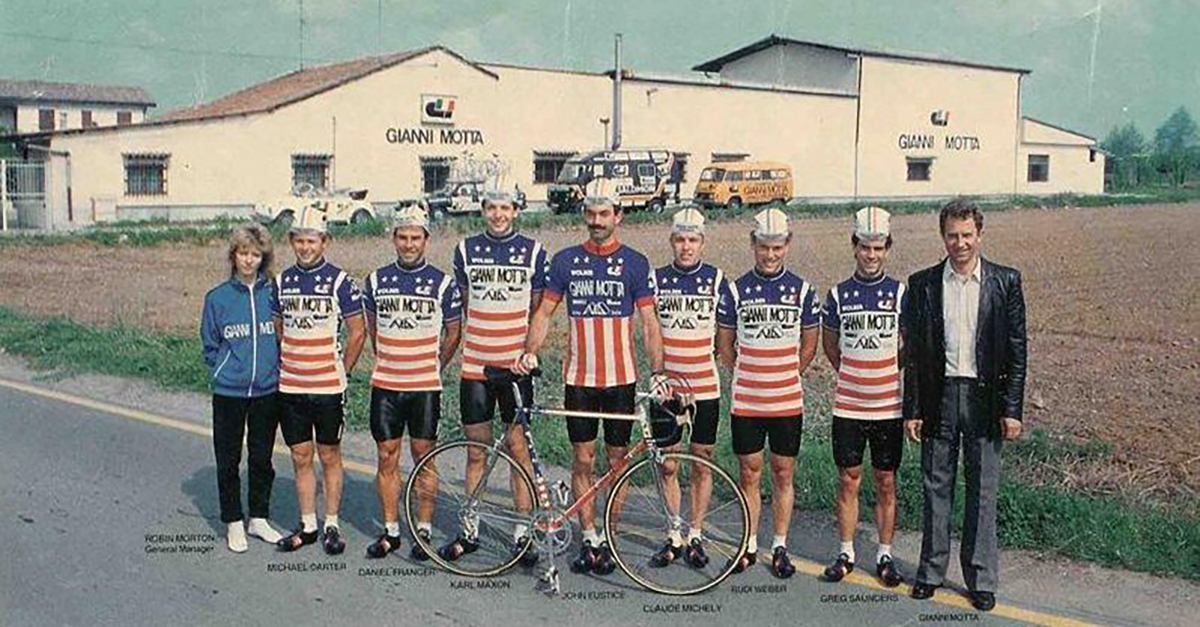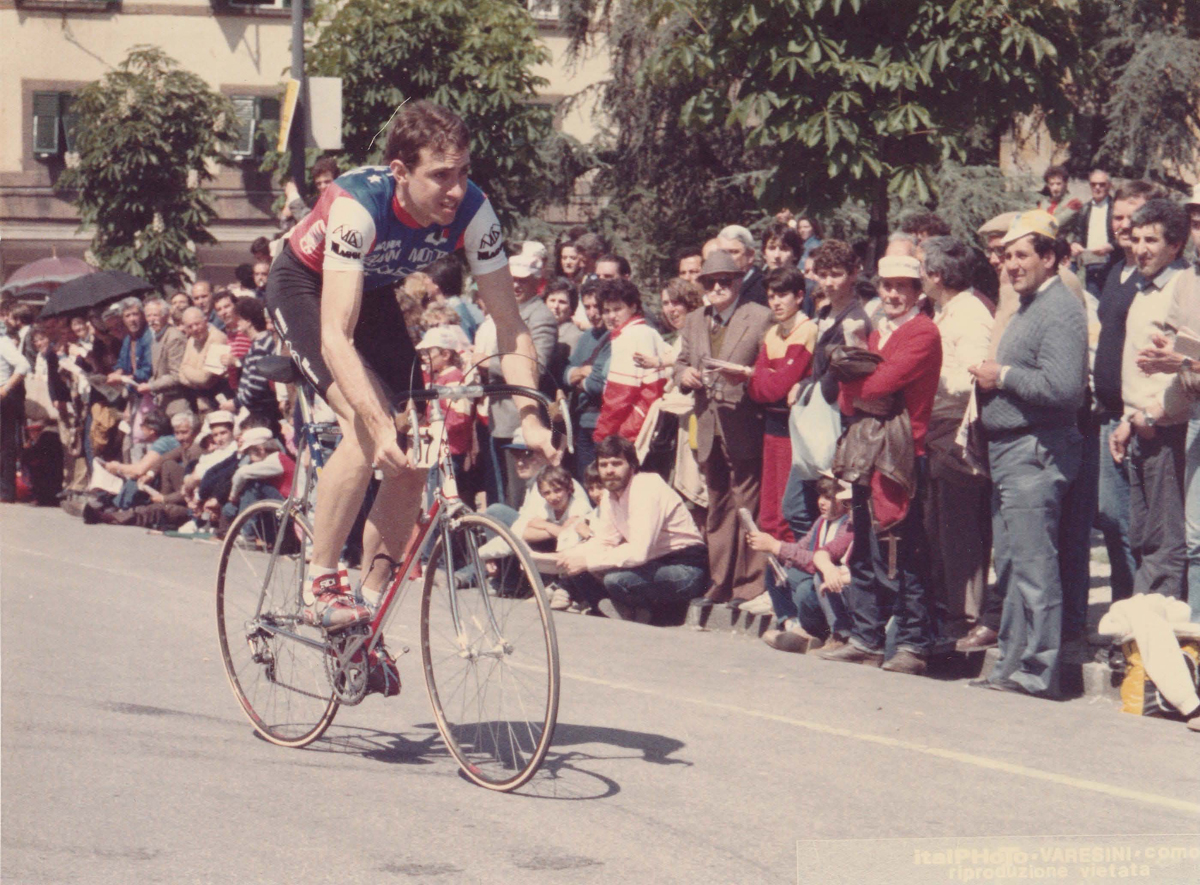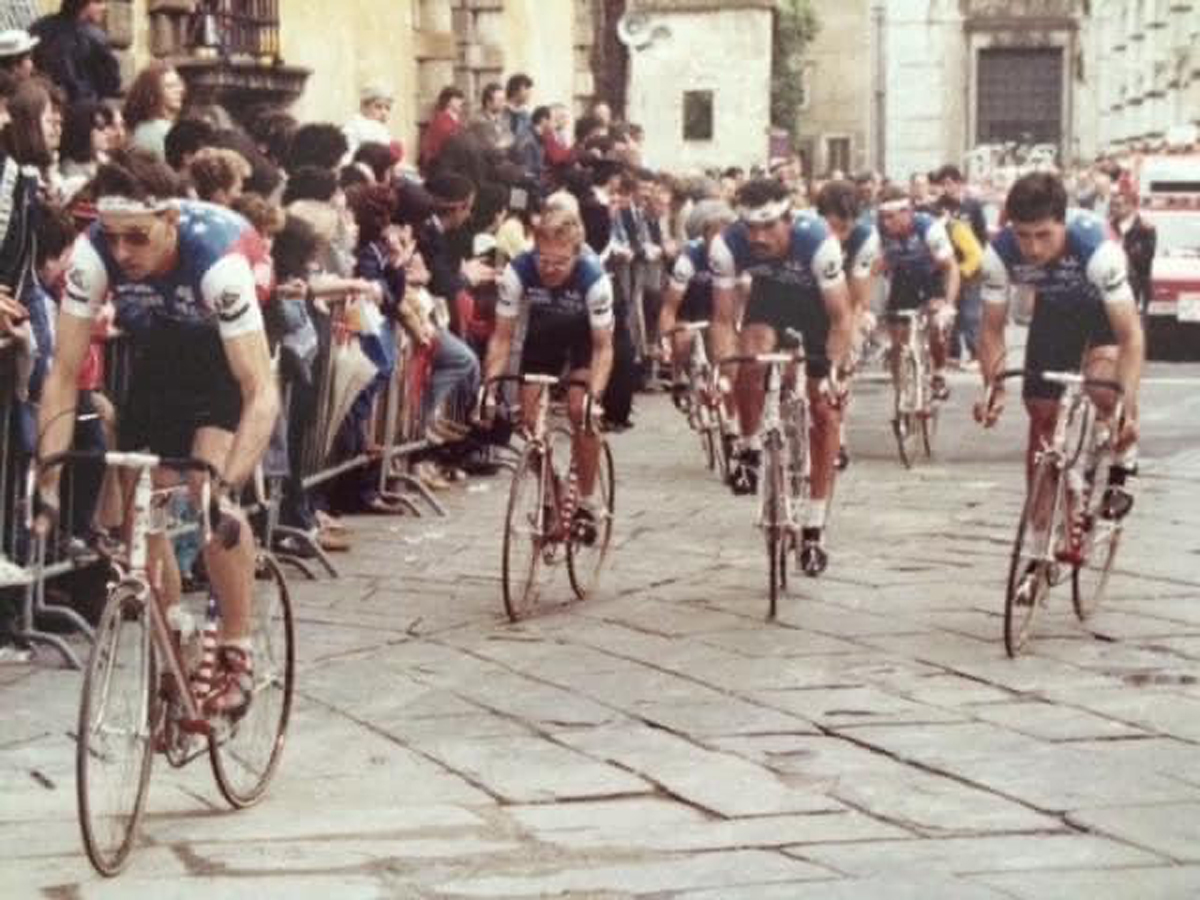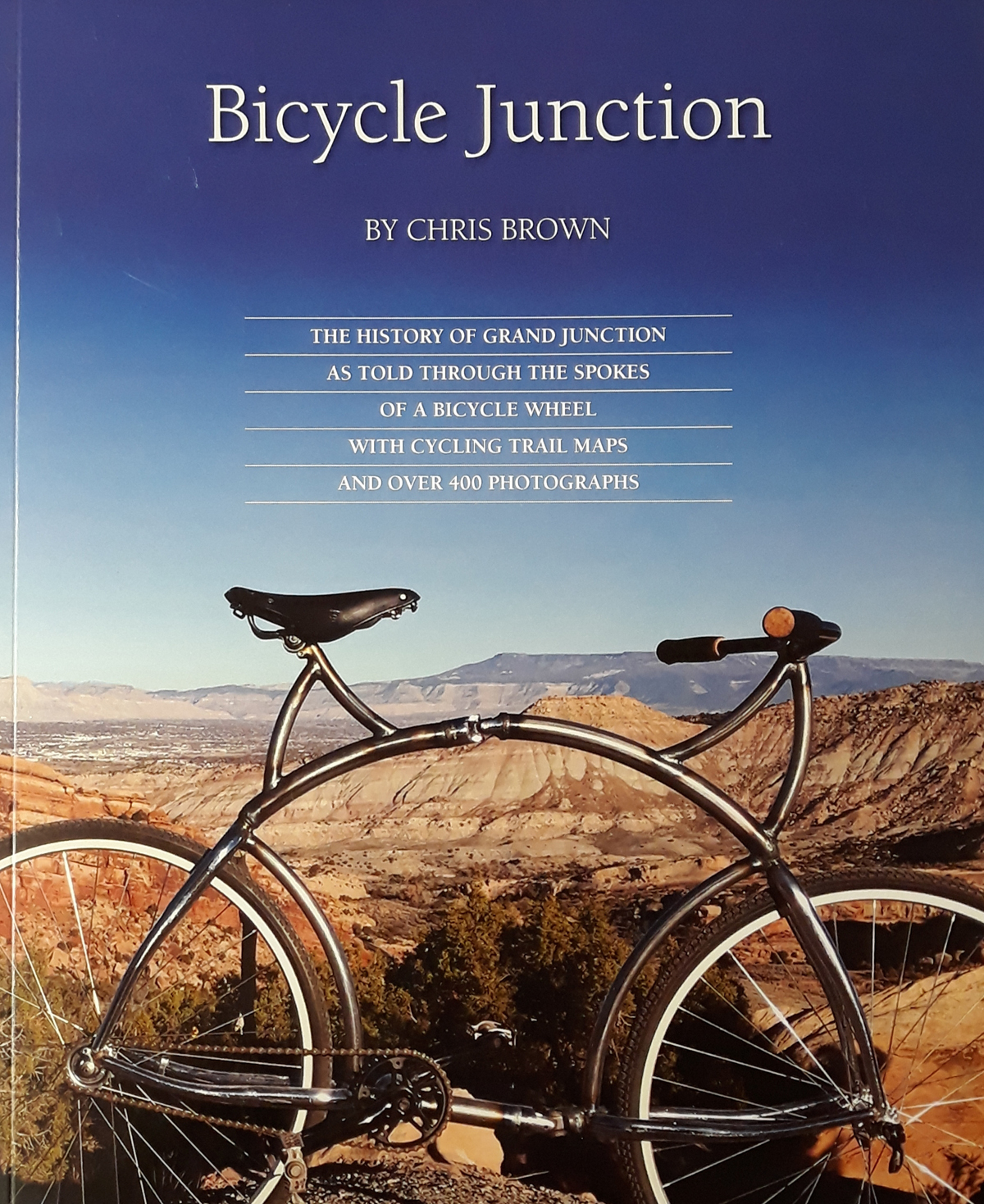By Dave Campbell — In the summer of 1984, I was fifteen years old and in my second year of serious bike racing. I was desperate to learn everything I could about this new sport that was still decidedly foreign to me and most of America. I was especially interested to learn about “our” progress in the exotic, incredibly demanding, and tradition rich races of Europe. Unlike most U.S. events, thousands watched these long-standing races from the roadside and up to this point, very few Americans had even contested them. In fact, only three—George Mount, Jonathan Boyer, and Greg Lemond. Each one of them had been veritable pioneers: Mount the first American to ride the Giro d’Italia, Boyer the first to ride the Tour de France, (both in 1981), and of course Lemond, not just racing but winning and currently riding as the reigning World Professional Road champion.
All these riders, however, accomplished their overseas cycling feats as mavericks on foreign teams. My main source of information on their exploits came from Velo News, a twice a month newspaper that I would read I soon as it arrived at “Freewheel Sports”, my local bike shop in Lander, Wyoming. Imagine my surprise one summer afternoon in 1984 when I discovered an American professional team had just competed in the 67th edition of the Giro d’Italia, the first American team ever to tackle a Grand Tour!

The Gianni Motta-Linea MD squad (sponsored by the Italian bicycle maker and a furniture company) had taken on the second biggest professional stage race in the world. The race ran from Lucca on May 17th and finishing in Verona on June 10th, covering 3808 kilometers over 22 stages. Six of the nine riders were Americans, all were neo-pros, and all the Americans (National pro champion John Eustice, Karl Maxon, Daniel Franger, Michael Carter, Tim Rutledge, and Greg Saunders) finished the race! After the historical and groundbreaking bits, though the story became one more of survival and perseverance. Their best finisher was Californian Franger in 78th overall at nearly two hours down on Italian winner Francesco Moser. He notably ranked 8th in the Young Rider division. Of the 171 starters, 143 riders made it to the finish in Verona and the last placed man was American Saunders. He was in this position from stage nine through to stage twenty-two, but he didn’t quit!!! He hung tough! The team finished last of the nineteen teams in the team competition, over five hours behind, but they finished!

Their best performance came from Karl Maxon, of Eugene, Oregon. The 24-year-old distance runner turned cyclist broke away alone on Stage four from Bologna to Numana on the Adriatic Coast, only 13 kilometers from the start. His lead peaked at 22 minutes, and he stayed off the front for 217 of the 238-kilometers! Until recently, it was the longest solo breakaway in Giro history, and he was even the virtual race leader at one point! Velo News reported that he likely would have stayed away but crashes by two favorites (Laurent Fignon and Johan Van de Velde) prompted defending champion Giuseppe Saronni’s team (Del Tongo-Colnago of Italy) to attack, putting paid to the Americans chances. Maxon rallied to finish a very respectable twelfth in the final time trial into Verona, enroute to 127th overall. It was noted how much promise he had shown. I would note that for me personally, he would later become a mentor and friend and ultimately a rival when I moved to Eugene to go to college and in subsequent years of racing in Oregon.

An Interview with Robin Morton – Director of the Gianni Motta-Linea MD Team
I recently interviewed Philadelphia native, Robin Morton, the pioneering director of the squad, to get the whole story. Robin’s husband raced for the Pennsylvania Bike Club in Chestnut Hill, a renowned racing club that had existed since the late 1920s and produced several very good riders over the years. The Mortons were very involved in the club by 1980. In 1982, John Eustice, a Pennsylvania bike club alum had come home from racing in Europe, and it was grinding him down after many years of being over there. He was racing on the French SEM team (led by Irishman Sean Kelly) along with fellow American Jonathan Boyer. Robin picks up the story:
“We met John at a club function, and he really wanted to put together an American team to go over and race in Europe. That was the impetus for the Gianni Motta team. John and I started to work together, and I helped him put together the Tour of America in 1983, sponsored by Gios. (note: The 1983 Tour of America was a one-off Pro-Am East Coast Spring Stage race that attracted some of the World’s top professionals). He brought over Roger De Vlaeminck and Claude Michely, a Luxembourger, who was a cyclocross rider. We had 3 or 4 Americans on the team and that was the beginning of it all.”
“We were not involved at all with the USCF (United States Cycling Federation, now USA Cycling). We did it on our own. John had a lot of connections in Europe, and I handled the organizational side of things. We just started working together and we met Gianni Motta (former Italian professional cyclist turned bicycle manufacturer) when John was racing in Europe after Tour of America. Gianni wanted to do an American team. At that point, John had the National Champion’s jersey that he had won in Baltimore. In the early 80s on the east coast, there were a lot of free agent pros, you didn’t have to be on a team then. It was a little bit different than today. There were also a lot of guys who wanted to turn pro but needed a team. The first race we did in 1984 as the Gianni Motta team was the Tour of Texas and then we went to the Tour Willamette and Cascade Classic (both in Oregon) and then headed to Italy!”
“We got into the Giro through Motta, who was a big champion in Italy, a past Giro and Tour de Suisse winner. (Note: A pro from 1964 through 1976, Motta won the 1966 Giro and the 1967 Tour of Switzerland. The team’s jersey featured pink and yellow commemorating each event’s leader’s jersey. The jerseys were later changed to a stars and stripes design for the Americans historic debut in the Giro.). He had a very charismatic and gregarious personality, very outgoing, and he had a lot of connections. At that point, the 7-Eleven team wasn’t over in Europe yet (note: they actually were racing in Europe but as amateurs with the US National Team and their focus on the 1984 Los Angeles Olympics), but they had a really big budget and were a much different organization. But the Italians and particularly race director Vincenzo Torriani, wanted to have an American team in the race. And certainly, I was something totally unique to get them publicity, an American team with a woman as a manager! I was totally different. So, they wanted the team!”
“Besides Motta providing bicycles, he came up with other sponsors to cover all of our expenses. We went over right after Cascade (the long running Bend, Oregon stage race then held in the spring) in April. When we first went over, we were definitely ‘fish out of water’ so to speak. We had a different mentality than all of the European teams. But now, even though there are bigger and better funded teams, the difference between American riders and the Europeans is not so great. But then, there just weren’t that many American pros. Most of our guys had just turned pro and hadn’t raced much in Europe! Gianni Motta really set their training schedules and then followed the team on these mega rides near where he lived in Lombardia. He was still very fit then and very attentive to their diets.”
“The reaction towards us was very mixed. I was treated pretty well and after we had been there a while, the riders were accepted. Karl had some standout performances. Obviously, he went on to be in some European teams like Fagor on his own, so he was a very talented guy. Until recently he had the longest solo breakaway in the Giro. In the final time trial, he was 12th without any aero equipment! Not even a disc wheel! Mike Carter, only 21, was a really good climber, this was his first trip to Europe. He went on to be on Motorola, a really talented guy. (note: In 1991, Carter finished third in the Tour of Romandie and rode the Tour de France with Motorola) It was a good little team and I think we hung in there and had some decent results. But again, it was really hard. We only did two European races before the Giro, Giro di Toscana (note: Maxon finished a creditable 16th) and then we went to the Giro di Puglia prior to starting the Giro.”
“I think the biggest difference was the structure. The disciplined system and a certain way of doing things. The very specific and traditional way teams had of doing things. I think that was a little bit challenging. There is a whole cultural difference between Americans and Italians or Europeans in general. Some of our guys had not even been to Europe to race before! The way that the team was organized was a little bit challenging. The riders on the other teams were just much more traditional and old-fashioned in their organization. Team personnel, for instance, weren’t allowed to eat with the riders. They had their own table, but I didn’t want to do that. Really the team personnel didn’t speak any English and I barely spoke any Italian, so I wanted to eat with the riders. And that alone was pretty controversial!”
“The racing was a lot more controlled then, today there is no real patron, or boss, in the peloton. It was a lot slower in the beginning and everyone stayed together, and there always would be teams that were allowed to go away and be in the breakaway, but it was much a more controlled style of racing than now. When the television helicopters arrived to show the final hours, the race went crazy! I still remember Stage 18 from Lecco to Merano, and it snowed a lot, and it was freezing. It was one of those “are they going to be able to ride tomorrow” kind of things. It was a 252-km stage with a bunch of climbs in the South Tyrol area and that stood out as a really hard day.”
“We were outliers. We were a blip on the radar screen, because most people don’t have a lot of historical information, they don’t even know about the team! We did it a little bit differently…we didn’t go through the USCF (now USA Cycling)., it wasn’t a national team, we didn’t have a big budget and a lot of money for promotion like 7-Eleven (note: they turned professional in 1985 and raced the Giro, winning two stages through Ron Kiefel and Andy Hampsten) did. We did it on our own, it was a very small team with a very small budget. It was definitely an adventure and an experience and something that wasn’t done by the book. It was just something that John wanted to do, it was his vision, and I bought into that, and we just said “hey, let’s do it!” It was a really wonderful experience and we had teams for eight years and the next year we did the Vuelta. We worked with European teams that John rode for, we later had Roberto Gaggioli (note: Gaggioli won CoreStates in 1988 and was one of the winningest riders on the American circuit in the late 80s and early 90s) and a great junior team that went to race in Italy. For me it led to a lot of other things, and I went on to work for the company that put on both the Philadelphia (CoreStates) and San Francisco races and I worked for them for fifteen years. But when we did it, it was not something that a lot of people were aware of.”
“All of the Americans finished. There were some issues with sponsorship. We did not find the sponsors, which was controlled by the European management and there were some issues…as there often is. So, all the riders were given an incentive, they got a bonus to finish the Giro. The sponsors didn’t think many would finish the race and when it became clear they would, they didn’t want to pay! Well, we found out afterwards that one of the mechanics was told to tighten the rider’s bottom brackets! So, every day when he worked on the bikes, he tightened the bottom brackets, so it made it a little harder to pedal! So, the fact that they finished the Giro is pretty incredible because it was like they were riding through quicksand!”
“We had a couple soigneurs and mechanics, but we didn’t bring them from the United States. The accommodations were typical small Italian hotels that were used to hosting cyclists and they were pretty good. I think the food was a little bit of an issue initially, especially breakfast. The Americans were used to eating a certain way and they didn’t want a steak and pasta for breakfast! I mean things have obviously changed although riders still adopt a certain kind of diet but having a steak and a big bowl of pasta at 6:30 in the morning without a lot of other choices took a little getting used to!”
“There was satisfaction among the riders for finishing the Giro but there were issues with the riders getting paid. No one knew what was going to happen next, were they going to do the Tour of Switzerland? A lot of the Americans came home, happy with their performance and the fact that they finished but frustrated with the internal issue of money and sponsorship with Gianni and the Linea MD furniture company. That was very draining…whether they were going to get paid. I felt a lot of personal satisfaction but also a lot of angst with how it all played out money-wise. It was really hard, and I give my riders all a lot of credit because we were all like fish out of water! We were not a super big team where everything was super well-organized and ran perfectly with lots of money and extra personnel to help. It was very much on a shoestring sort of thing. We all just did the best we could.”
“It was a great experience, and I am sure that when they look back on it now their take on things is very different than it was right after the Giro. Because I know mine is! Ha! At that time, I was just like this was the hardest thing I’ve ever done, and I can’t believe I made it through this! I was about to leave during the middle of the Giro just because I couldn’t deal with the whole sponsorship thing anymore. I was sort of being shunted off and not involved or able to have a say. It was just ‘get through it and finish it’! A lot of the riders were really accepting, though, and I got invited into this Rancilio sponsor RV at the end and got to hang out with Roberto Visentini, Moser, Saronni, and all the big riders. I got to experience the whole spectrum, so in the end, I have to say the Italians were pretty accepting.”
This article is dedicated to Tim and Heather Rutledge and their family. Tim passed away on February 12th of this year after a long and difficult battle with Cancer.
The 107th edition of the Giro d’Italia begins May 4th in Venaria Reale and concludes May 26th in Rome.
References:
- Blumenthal, Tim. “Giro to Moser” VeloNews, June 22, 1984.
- Martin, Pierre; Penazzo, Sergio; Bratino, Dante; Schamps, Daniel; & Vos, Cor. (1984) Tour 84. Kennedy Brothers Publishing Ltd.
- Morton, R. (2023, November 27). Personal communication.








